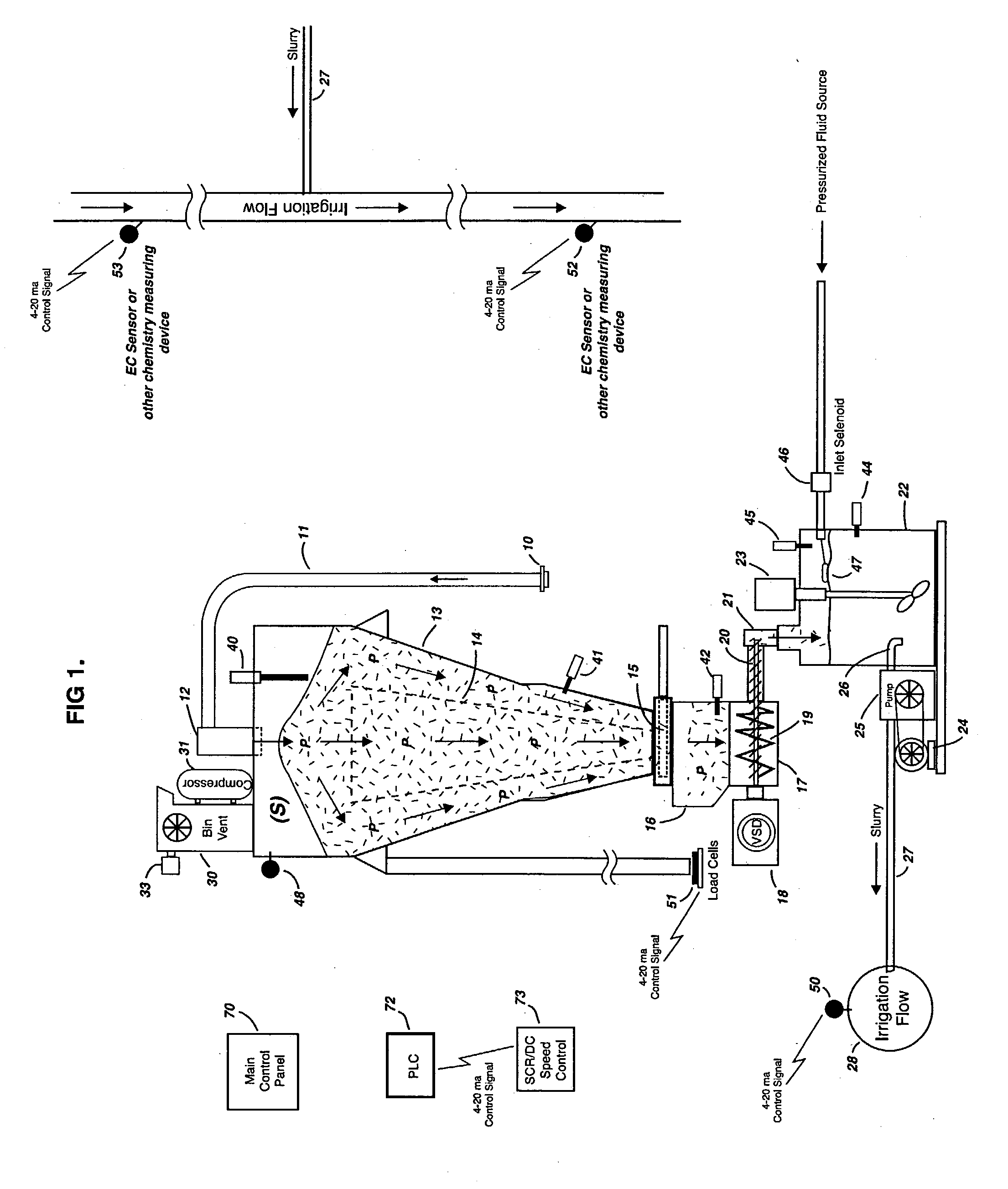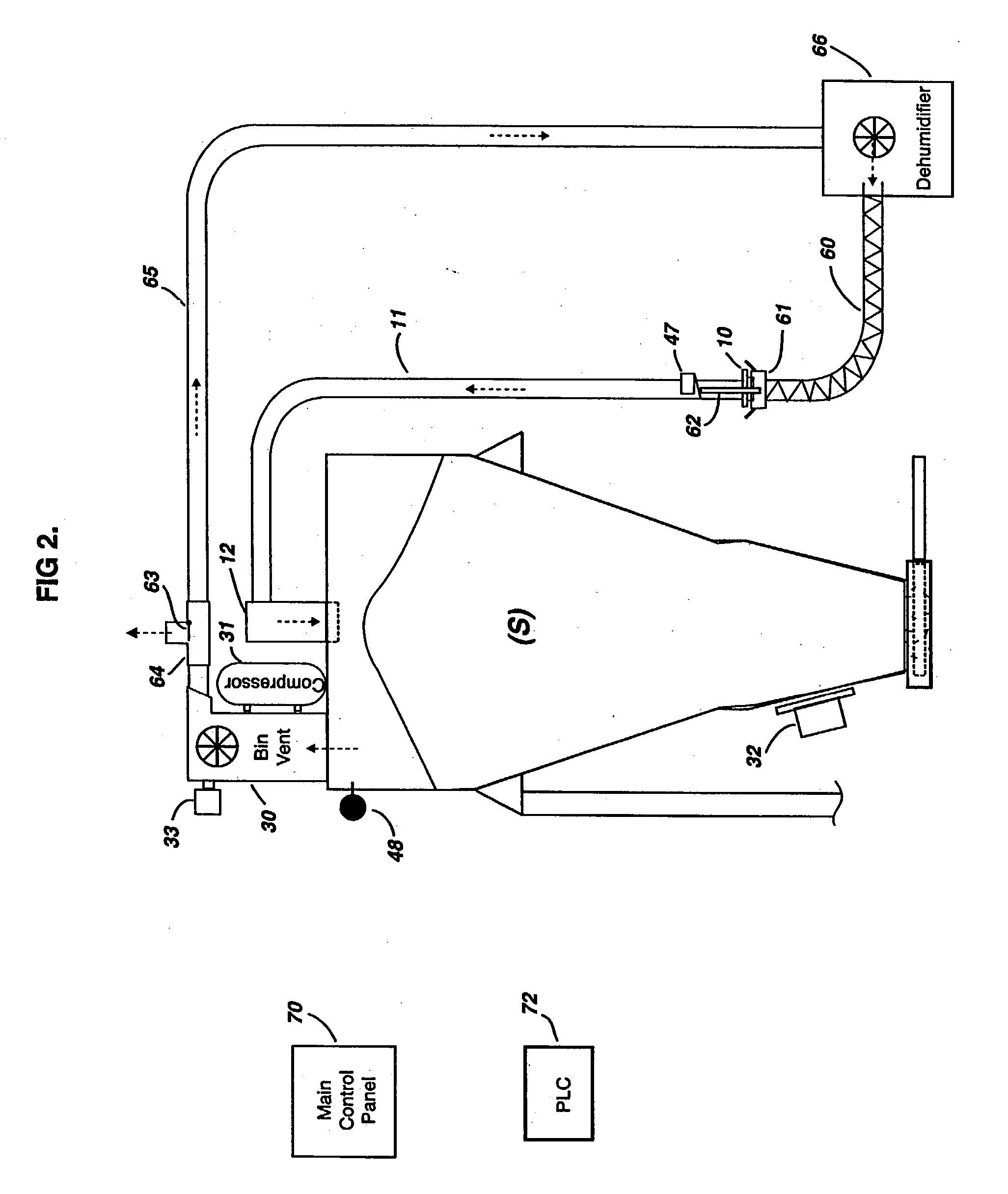Apparatus and method for injecting dry bulk amendments for water and soil treatment
a dry bulk and irrigation water technology, applied in the field of water amendment technology, can solve the problems of irrigation water flow variability and rapid change, mechanically fixed injection rate, and marginal application rate using any of these methods, or other similar methods, and achieve the effect of under-application or worse, over-treatment of irrigation water
- Summary
- Abstract
- Description
- Claims
- Application Information
AI Technical Summary
Benefits of technology
Problems solved by technology
Method used
Image
Examples
Embodiment Construction
[0046] Referring to the drawings wherein like reference characters refer to the same or corresponding structures throughout the several views, and referring particularly to FIG. 1 it is seen that the present invention includes an apparatus and means to process and meter a dry bulk amendment, introduce the dry material into a fluid medium, and inject the resultant slurry into an fluid flow or system. While the system described and illustrated in the appended drawings refers to a water or waste water flow used for soil irrigation purposes, it is to be appreciated that the method and apparatus of the present invention may be adapted for and used in a wide variety of commercial, industrial and / or agricultural applications.
[0047] A means for storage and process delivery of dry bulk amendments is provided by a silo S incorporating a mass flow design consisting generally of an outer silo or hopper 13 which is typically, although not necessarily, of a size and shape so as to conveniently re...
PUM
| Property | Measurement | Unit |
|---|---|---|
| volume | aaaaa | aaaaa |
| speed | aaaaa | aaaaa |
| flow rate | aaaaa | aaaaa |
Abstract
Description
Claims
Application Information
 Login to View More
Login to View More - R&D
- Intellectual Property
- Life Sciences
- Materials
- Tech Scout
- Unparalleled Data Quality
- Higher Quality Content
- 60% Fewer Hallucinations
Browse by: Latest US Patents, China's latest patents, Technical Efficacy Thesaurus, Application Domain, Technology Topic, Popular Technical Reports.
© 2025 PatSnap. All rights reserved.Legal|Privacy policy|Modern Slavery Act Transparency Statement|Sitemap|About US| Contact US: help@patsnap.com



